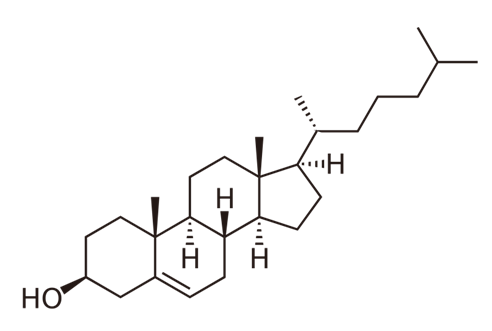Select Chapter Topics:
The enzymes that catalyse removal of groups from substrates by mechanisms other than hydrolysis leaving double bonds are called as:
1.
Oxidoreductases
2.
Hydrolases
3.
Ligases
4.
Lyases
Subtopic: Enzymes Classification |
75%
From NCERT
Please attempt this question first.
Hints
Please attempt this question first.
| Assertion (A): | Secondary metabolites in plants do not play any roles in the plant bodies. |
| Reason (R): | All secondary metabolites are excretory products in plants. |
| 1. | Both (A) and (R) are True and (R) correctly explains (A). |
| 2. | Both (A) and (R) are True and (R) does not correctly explain (A). |
| 3. | (A) is True; (R) is False |
| 4. | Both (A) and (R) are False |
Subtopic: Primary & Secondary Metabolites |
Please attempt this question first.
Hints
The molecule shown below is a/an:

1. Amino acid
2. Lipid
3. Polysaccharide
4. Protein

1. Amino acid
2. Lipid
3. Polysaccharide
4. Protein
Subtopic: Lipids |
82%
From NCERT
Please attempt this question first.
Hints
Please attempt this question first.
What are thymidine, uridine, and cytidine?
1. Purines
2. Pyrimidines
3. Nucleosides
4. Nucleotides
1. Purines
2. Pyrimidines
3. Nucleosides
4. Nucleotides
Subtopic: Element Analysis | Nucleic Acid: Nucleotides |
61%
From NCERT
Please attempt this question first.
Hints
Please attempt this question first.
Which group of enzymes catalyze the chemical reaction where there is linking together of two compounds?
1. Lyases
2. Transferases
3. Isomerases
4. Ligases
1. Lyases
2. Transferases
3. Isomerases
4. Ligases
Subtopic: Enzymes Classification |
90%
From NCERT
Please attempt this question first.
Hints
Please attempt this question first.
Identify the given molecule:

1. Cholesterol
2. Phospholipid
3. Triglyceride
4. Fatty acid

1. Cholesterol
2. Phospholipid
3. Triglyceride
4. Fatty acid
Subtopic: Lipids |
86%
From NCERT
Please attempt this question first.
Hints
Please attempt this question first.
Consider the given two statements:
| Assertion (A): | The effect of competitive inhibition can be overcome by increasing the substrate of the enzyme. |
| Reason (R): | The presence of a competitive inhibitor can decrease the rate of enzyme-catalyzed reaction by blocking the substrate from binding to the enzyme. |
| 1. | Both (A) and (R) are True and (R) correctly explains (A) |
| 2. | Both (A) and (R) are True but (R) does not correctly explain (A) |
| 3. | (A) is True but (R) is False |
| 4. | (A) is False but (R) is True |
Subtopic: Enzyme Inhibition: Introduction | Enzyme Inhibition |
Please attempt this question first.
Hints
Please attempt this question first.
Which of the following describes the substrate concentration at which an enzyme-catalyzed reaction achieves half Vmax?
1. Km value
2. Kcat value
3. pKa value
4. Q10
Subtopic: Factors Affecting Enzyme Catalysis Reaction |
94%
From NCERT
Please attempt this question first.
Hints
Please attempt this question first.
Consider the given two statements
| Assertion (A): | In the absence of carbonic anhydrase, carbon dioxide will not react with water to produce carbonic acid. |
| Reason (R): | Enzymes are the cause for the reactions to take place. |
| 1. | Both (A) and (R) are True and (R) correctly explains (A). |
| 2. | Both (A) and (R) are True but (R) does not correctly explain (A). |
| 3. | (A) is True, (R) is False. |
| 4. | (A) is False, (R) is False. |
Subtopic: Enzymes |
65%
From NCERT
Please attempt this question first.
Hints
Please attempt this question first.
Chitin:
1. Only I is correct
2. Only II is correct
3. Both I and II are correct
4. Both I and II are incorrect
| I: | is a long-chain polymer of N-acetylglucosamine. |
| II: | is a primary component of cell walls in fungi. |
2. Only II is correct
3. Both I and II are correct
4. Both I and II are incorrect
Subtopic: Carbohydrates: Cellulose, Chitin, Inulin & Agar |
94%
Please attempt this question first.
Hints
Select Chapter Topics:


